Discover Warriors In Their Own Words | First Person War Stories
Warriors In Their Own Words | First Person War Stories

 Warriors In Their Own Words | First Person War Stories
Warriors In Their Own Words | First Person War Stories
Author: Evergreen Podcasts | The Honor Project
Subscribed: 1,793Played: 84,080Subscribe
Share
© The Honor Project
Description
The unsanitized truth of what we have asked of those who defend this nation. From archived tapes of WWI veterans, to conversations with modern-day warriors, these are their stories, in their own words.
184 Episodes
Reverse
QM2 Brett Jones joined the Navy in 1993 with the goal of becoming a Navy SEAL. Jones says he “wasn’t ready” the first time he went through SEAL training, and he did not complete the course. He came back and successfully completed the training on his second attempt.
Jones joined SEAL Team 8, the most active of all the SEAL teams, where he served abroad. Due to the covert nature of SEAL operations, Jones wasn’t able to share all the details of his engagements, but he does talk about missions in Iraq, and the pain of losing friends in combat.
After almost being kicked out of the SEALs, Jones decided to leave voluntarily. He continued to serve as a member of the CIA, deploying to Iraq again and protecting high value individuals in “high threat environments”.
Jones is now a part time police officer in Alabama.
Learn more about your ad choices. Visit megaphone.fm/adchoices
Master Chief Petty Officer Ken Falke served in the Navy as an Explosive Ordnance Disposal (EOD) Specialist during the 80s and 90s. He was tasked with disarming all sorts of explosives, and deployed all over the world, including to Iraq during the Gulf War, and Bosnia during the Bosnian War.
Now, Falke and his wife run a non-profit called Boulder Crest which helps veterans and first responders with mental health struggles, and achieve “post-traumatic growth”. Learn more at bouldercrest.org.
Thank you to Regal for sponsoring this episode. You can sign up for Regal Unlimited via this link, and make sure to use code WARRIORS24 to get 10% off!
Learn more about your ad choices. Visit megaphone.fm/adchoices
The Jordan Harbinger Show is an award winning podcast with fascinating guest interviews which we've come to love. Hope you enjoy it as much as we do.
Major Edward James Land Jr. served in the Marine Corps during the Vietnam War. In the 1960s, Land and Richard O. Culver Jr. worked together to create the first permanent Marine Corps Scout Sniper School.
In this special episode, Maj Land explains how the school came to be, and tells a few stories from his time in Vietnam.
Thank you to Regal for sponsoring this episode. You can sign up for Regal Unlimited via this link, and make sure to use code WARRIORS24 to get 10% off!
Learn more about your ad choices. Visit megaphone.fm/adchoices
"The aircraft started to spin. Not really thinking it was anything unusual, I remember calling the pilot saying, 'Hey sir, are we going to stop this?' When he responded with, 'I can't,' I knew this wasn't going to end well."
Click here to check out our web-exclusive interview with Staff Sergeant Mark Lalli. Lalli served in Iraq as a Blackhawk Helicopter crew chief and survived a helicopter crash that killed six of the eleven passengers on board, but he sustained life-changing injuries.
Learn more about your ad choices. Visit megaphone.fm/adchoices
Lieutenant Colonel Henry “Hank” Buttelmann served in Korea and Vietnam as a fighter pilot. In Korea, he flew the F-86, and became the youngest ace of the war at the age of 24. He left Korea with 6 confirmed kills. Buttelmann retired with four DIstinguished Flying Crosses and a Silver Star.
In this interview, Buttelmann talks about his time in Korea, the F-86, crossing the 38th parallel, and fighting enemy MiGs.
Thank you to Regal for sponsoring this episode. You can sign up for Regal Unlimited via this link, and make sure to use code WARRIORS24 to get 10% off!
Learn more about your ad choices. Visit megaphone.fm/adchoices
In this special episode, Lt. Ken Harbaugh, the host of Warriors In Their Own Words, is interviewed by MOH recipient SSG David Bellavia about his service in the Navy. Harbaugh served from 1996 - 2005 as an EP-3 pilot, tasked with collecting signals intelligence from adversaries such as Russia, North Korea, and China.
You can find more information about the 2001 aircraft collision mentioned in this interview here and here.
Thank you to Regal for sponsoring this episode. You can sign up for Regal Unlimited via this link, and make sure to use code WARRIORS24 to get 10% off!
Learn more about your ad choices. Visit megaphone.fm/adchoices
COL Walter Joseph Marm Jr. served as a rifle platoon leader in Vietnam. When a friendly platoon was trapped behind enemy lines, Marm and his platoon were sent to rescue them. Attempting to take a hill held by the enemy, Marm single-handedly killed 14 enemies with his rifle and a grenade before being shot in the face, shattering his jawbone. He then walked back to his command post and was evacuated.
Marm’s heroism led to a successful rescue, and for this he was awarded the Medal of Honor.
To hear all the details of what earned Marm the Medal of Honor, listen to this episode of the Medal of Honor Podcast.
Learn more about your ad choices. Visit megaphone.fm/adchoices
Warning, this episode contains harsh language, graphic violence, gore, and description of rape. Listener discretion is advised.
CSM Tonya Oxendine served in the US Army for nearly 30 years, retiring as a Command Sergeant Major. She did two tours in Iraq & Afghanistan as a paratrooper.
In this interview, Oxendine describes the abuse she endured both at home, and during her time in uniform, and how she overcame that trauma.
Learn more about Oxendine and the Wounded Warrior Project here.
Learn more about your ad choices. Visit megaphone.fm/adchoices
Today as a bonus episode, we’ll be airing an episode of Everything Everywhere Daily about Admiral Isoroku Yamamoto. Everything Everywhere Daily is a podcast that allows listeners to learn something new every day on various subjects, like history, science, geography, mathematics, and technology.
Here’s episode #1321, about Admiral Isoroku Yamamoto. He was the leader of the combined Japanese fleet in the Pacific Theater during World War II, and planned the attack on Pearl Harbor despite opposing war with the US.
--
In the Pacific Theater in World War II, the leader of the combined Japanese fleet was Admiral Isoroku Yamamoto.
Yamamoto was vilainized as the arch-enemy of the American forces in the Pacific, and to be fair, he was their enemy.
But there is actually much more to the story. Yamamoto was the loudest voice against war with the United States and was one of the only officials in the Japanese leadership who spent time in the United States and understood it.
Learn more about Admiral Isoroku Yamamoto, his rise and tragic end on this episode of Everything Everywhere Daily.
Learn more about your ad choices. Visit megaphone.fm/adchoices
In this final part of his interview, Kim talks about the Battle of Anzio, earning the Distinguished Service Cross, and his feelings about the war.
–
Young Oak Kim was born in Los Angeles to a Korean family in 1919. He tried enlisting prior to World War II, but was denied due to his race. When war finally broke out in Europe, Congress passed the Selective Training Service Act of 1940, requiring all men between the ages of 21 and 45, regardless of race, to register for the draft. Kim was among the first group of men allied up, and he entered the Army in January 1941.
Racism, exacerbated by Japan’s role in the war, was commonplace both in and out of the military. Despite proving himself to be an exceptional shooter during training, Kim was initially denied the opportunity to fight in the war because he had the “wrong color skin and wrong color eyes”. Eventually, Kim’s skill was recognized by his superiors and he was elected for Officer Candidate School, graduating in February 1943.
From there, Kim was assigned as the second platoon leader of Company B, 100th Infantry Battalion. The 100th was a racially segregated unit composed mostly of second generation Japanese Americans (known as Nisei) from Hawaii. Following the Attack on Pearl Harbor, the 100th was removed from Hawaii and sent to the mainland for training.
Kim and the 100th Infantry Battalion were sent to Italy in September of 1943. They fought in the Battle of Monte Cassino and the Battle of Anzio, and earned the nickname “The Purple Heart Battalion” due their high casualty rate. Kim was awarded a Distinguished Service Cross for an incredible midnight infiltration mission, which he talks about in the next episode.
After leaving Italy, the 100th Infantry Battalion became part of the 442nd Regimental Combat Team, another segregated Nisei regiment, and sent to France. Kim was injured by enemy fire at Biffontaine, and was sent back to the US, later earning a Silver Star and the French Croix de Guerre for his actions in France. Germany surrendered before he was able to return.
Kim left the Army following World War II, but when war broke out in Korea, he rejoined. He commanded a South Korean guerrilla unit, and was awarded another Silver Star for his actions there.
Kim left Korea in 1952. He then worked as an instructor at Fort Benning, and at the U.S. Army Command and General Staff College at Fort Leavenworth. He retired in 1972 at the rank of colonel as one of the most highly decorated Asian American soldiers in U.S. history with a total of 19 medals.
The 100th also made history, becoming one of the most highly decorated units of World War II.
Learn more about your ad choices. Visit megaphone.fm/adchoices
In this first part of his interview, COL Kim talks about joining the Army, serving as a Korean American in World War II, and the Battle of Monte Cassino
–
Young Oak Kim was born in Los Angeles to a Korean family in 1919. He tried enlisting prior to World War II, but was denied due to his race. When war finally broke out in Europe, Congress passed the Selective Training Service Act of 1940, requiring all men between the ages of 21 and 45, regardless of race, to register for the draft. Kim was among the first group of men allied up, and he entered the Army in January 1941.
Racism, exacerbated by Japan’s role in the war, was commonplace both in and out of the military. Despite proving himself to be an exceptional shooter during training, Kim was initially denied the opportunity to fight in the war because he had the “wrong color skin and wrong color eyes”. Eventually, Kim’s skill was recognized by his superiors and he was elected for Officer Candidate School, graduating in February 1943.
From there, Kim was assigned as the second platoon leader of Company B, 100th Infantry Battalion. The 100th was a racially segregated unit composed mostly of second generation Japanese Americans (known as Nisei) from Hawaii. Following the Attack on Pearl Harbor, the 100th was removed from Hawaii and sent to the mainland for training.
Kim and the 100th Infantry Battalion were sent to Italy in September of 1943. They fought in the Battle of Monte Cassino and the Battle of Anzio, and earned the nickname “The Purple Heart Battalion” due their high casualty rate. Kim was awarded a Distinguished Service Cross for an incredible midnight infiltration mission, which he talks about in the next episode.
After leaving Italy, the 100th Infantry Battalion became part of the 442nd Regimental Combat Team, another segregated Nisei regiment, and sent to France. Kim was injured by enemy fire at Biffontaine, and was sent back to the US, later earning a Silver Star and the French Croix de Guerre for his actions in France. Germany surrendered before he was able to return.
Kim left the Army following World War II, but when war broke out in Korea, he rejoined. He commanded a South Korean guerrilla unit, and was awarded another Silver Star for his actions there.
Kim left Korea in 1952. He then worked as an instructor at Fort Benning, and at the U.S. Army Command and General Staff College at Fort Leavenworth. He retired in 1972 at the rank of colonel as one of the most highly decorated Asian American soldiers in U.S. history with a total of 19 medals.
The 100th also made history, becoming one of the most highly decorated units of World War II.
Learn more about your ad choices. Visit megaphone.fm/adchoices
Lieutenant Colonel Joseph Kopser attended West Point before joining a cavalry unit in the U.S. Army. He volunteered to go to Iraq in 2004 working out of one of Saddam Hussein's Palaces and then again in 2006-2007 where he served as a Battalion Executive Officer in the 1st Cavalry Division.
Learn more about your ad choices. Visit megaphone.fm/adchoices
In this special episode, Lieutenant General Harry Kinnard explains how he helped develop the Airmobile concept- which later became the 1st Air Cavalry Division in the U.S. Army. The Airmobile approach integrated helicopters into the structure of ground forces, allowing troops and supplies to be delivered quickly over difficult terrain, and even over enemy lines. It’s considered as radical as the change from horses to trucks. It was first used in Vietnam.
Learn more about your ad choices. Visit megaphone.fm/adchoices
Captain John Robert Cotter served in the Australian Army in Vietnam. He was a combat engineer, tasked with disarming mines, dismantling booby traps, dealing with gas warfare, establishing roadways for infantry transport, and more. He was among the first to discover the tactical importance and vast scale of enemy tunnels, and it was his job to crawl through them in order to map their network, seize supplies, flush out enemies, and place explosives.
Learn more about your ad choices. Visit megaphone.fm/adchoices
Colonel John Anthony Cash served in the Army as a Rifle Company Commander in Vietnam. In this second part of his interview, Cash tells more incredible stories, reflects on the war as a whole, and talks about coming home.
Before serving in Vietnam, Cash helped train Cuban nationals in the lead up to the Bay of Pigs Invasion.
He later contributed to Seven Firefights in Vietnam, The Exclusion of Black Soldiers from the Medal of Honor in World War II, and Black Soldier-White Army: The 24th Infantry Regiment in Korea.
Learn more about your ad choices. Visit megaphone.fm/adchoices
Colonel John Anthony Cash served in the Army as a Rifle Company Commander in Vietnam. In this interview, Cash recalls hearing updates about the devastating Battle of Ia Drang around a radio, serving in Operation White Wing, and several tragic stories from his tour.
Before serving in Vietnam, Cash helped train Cuban nationals in the lead up to the Bay of Pigs Invasion.
He later contributed to Seven Firefights in Vietnam, The Exclusion of Black Soldiers from the Medal of Honor in World War II, and Black Soldier-White Army: The 24th Infantry Regiment in Korea.
Learn more about your ad choices. Visit megaphone.fm/adchoices
Staff Sergeant Charles Klein served in the Army Rangers during the invasion of Normandy. He commanded a section of riflemen, and as a member of the 5th Ranger Battalion, he was one of the first units to land at Omaha beach that day.
In this interview, S/Sgt. Klein recounts his training, D-Day, and being sent home after being wounded in action.
He also shares something a fellow lieutenant said in the months following the invasion:
“He thought for a while, and he said, ‘Lieutenant,’ he says, ‘I don't mind fighting for my country.’ He said, ‘It's a dying part I don't like.’ So I guess that about sums it up.”
Learn more about your ad choices. Visit megaphone.fm/adchoices
Sergeant Jim Purvis served in the Army as an infantryman during the Vietnam War. In this interview, he recounts being kicked out of Officer Candidate School, his time in Vietnam, and how Vietnam differed from previous American military conflicts.
“Anytime you have a war, it's a very, very sad experience.” - SGT Purvis
Learn more about your ad choices. Visit megaphone.fm/adchoices
In this interview, Rick Render describes the Christmas of 1944, when he spent all day waiting in line to enter a German prison camp.
Render served as an army infantryman in World War II. He was captured during the Battle of the Bulge and taken as a prisoner of war by the Germans. He spent time in prison camps in Nuremberg and Hammelburg, and was liberated in 1945 by his own division.
Learn more about Render here.
Learn more about your ad choices. Visit megaphone.fm/adchoices


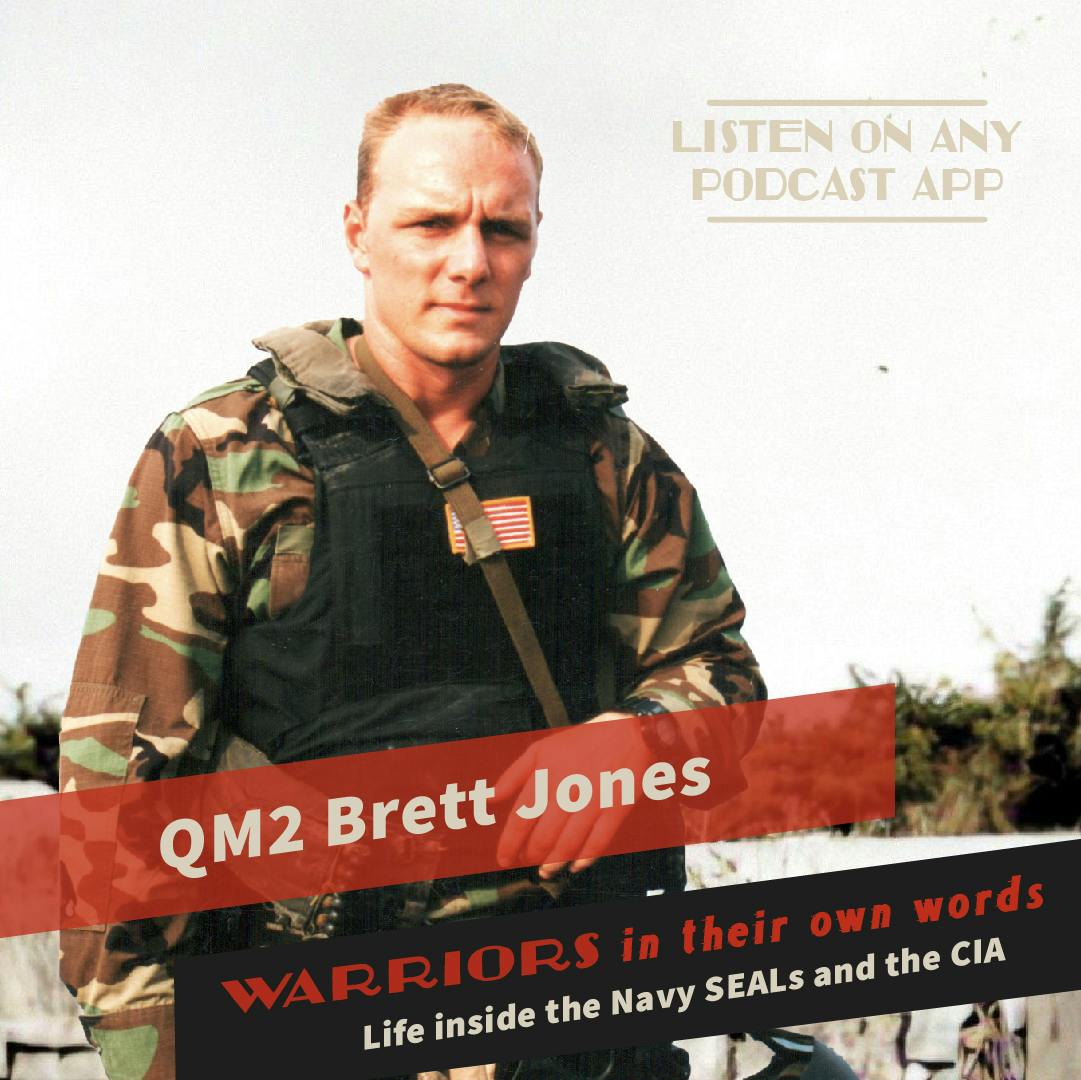
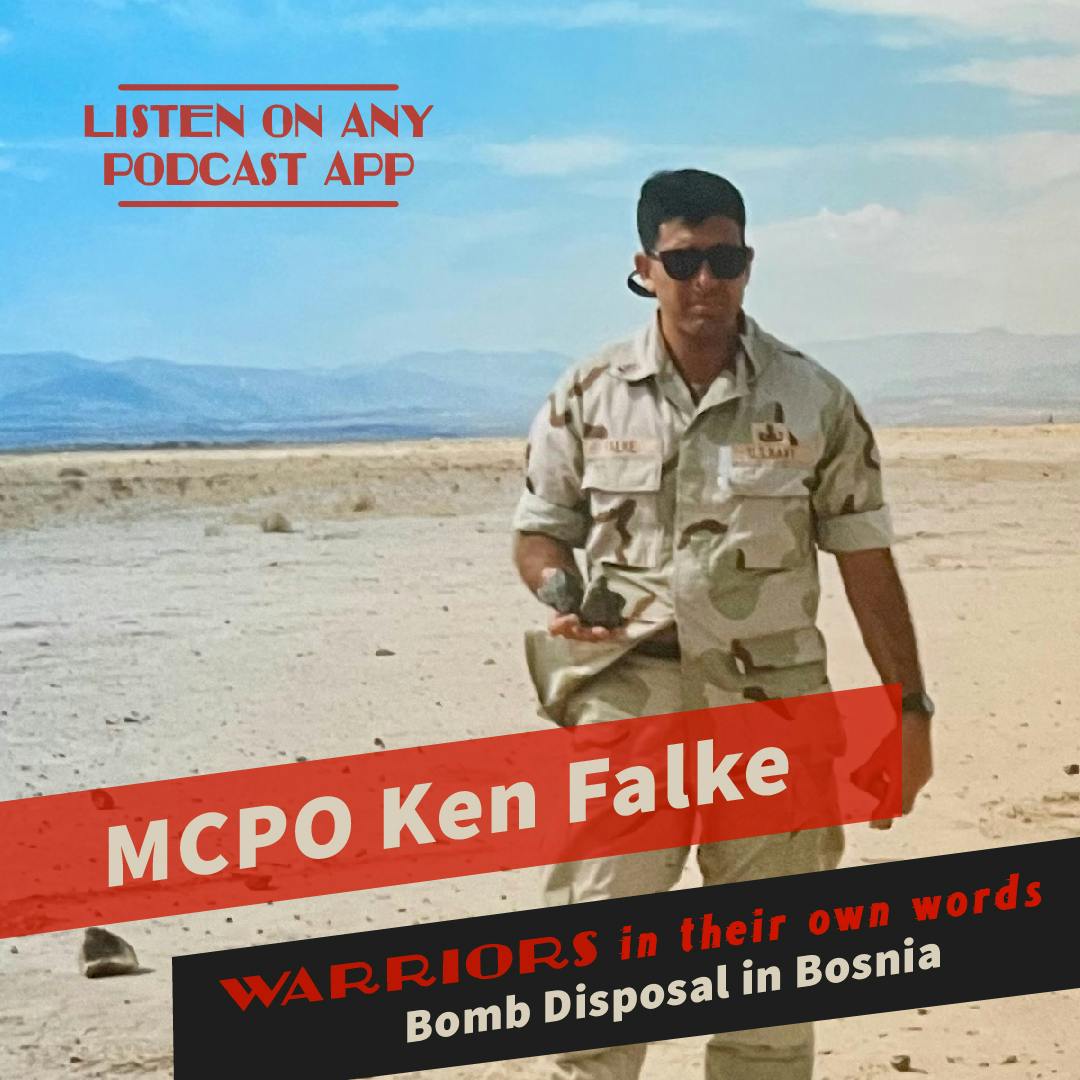


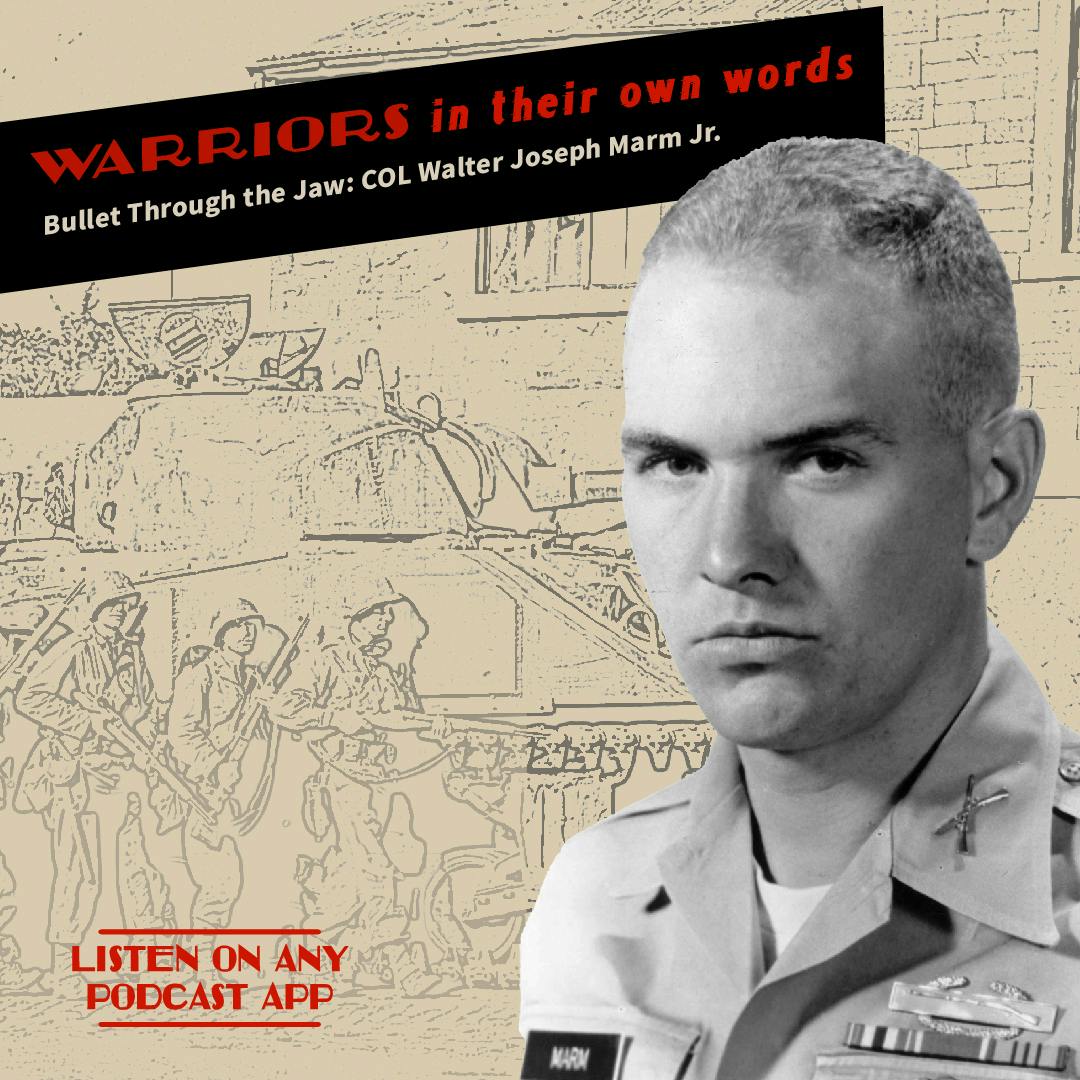
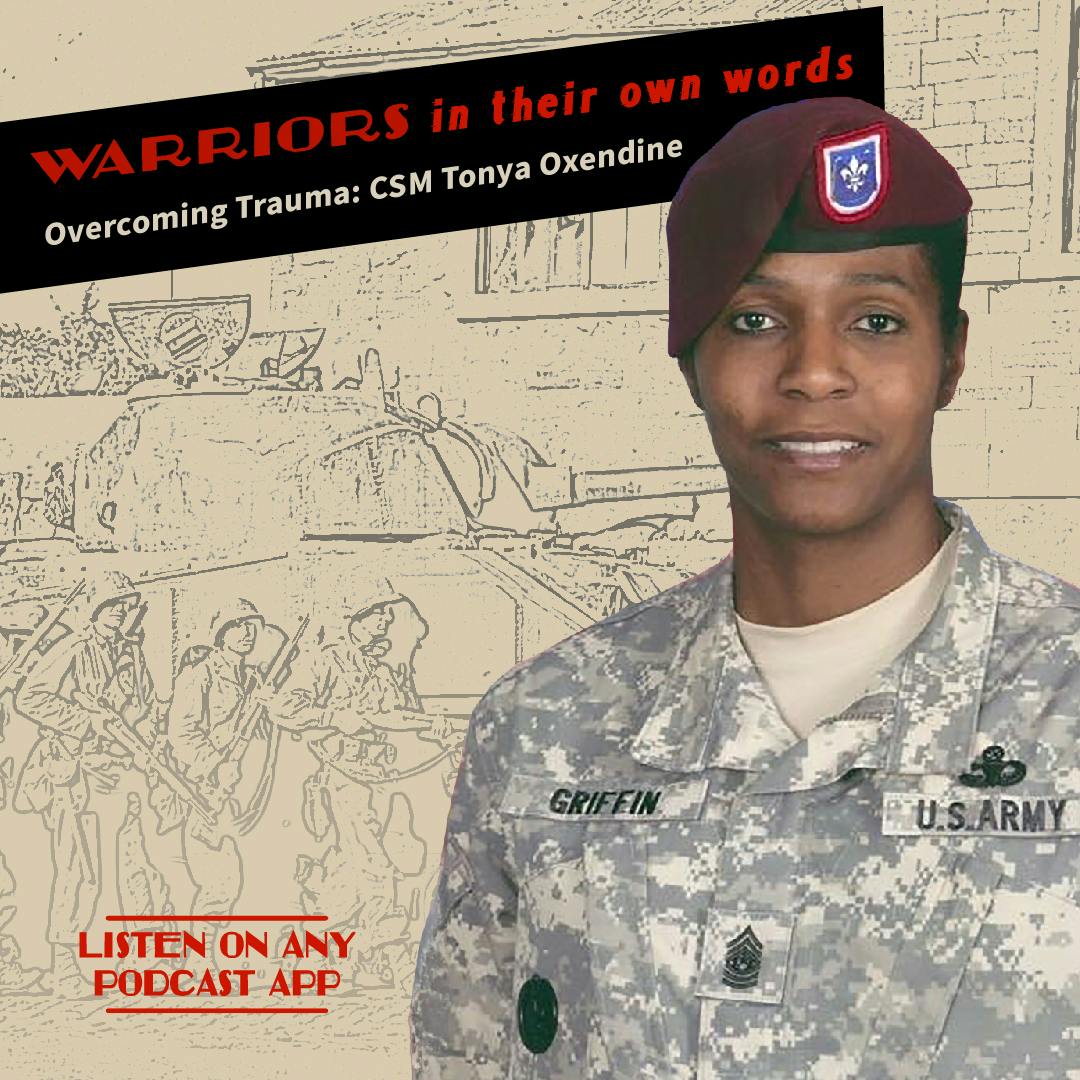

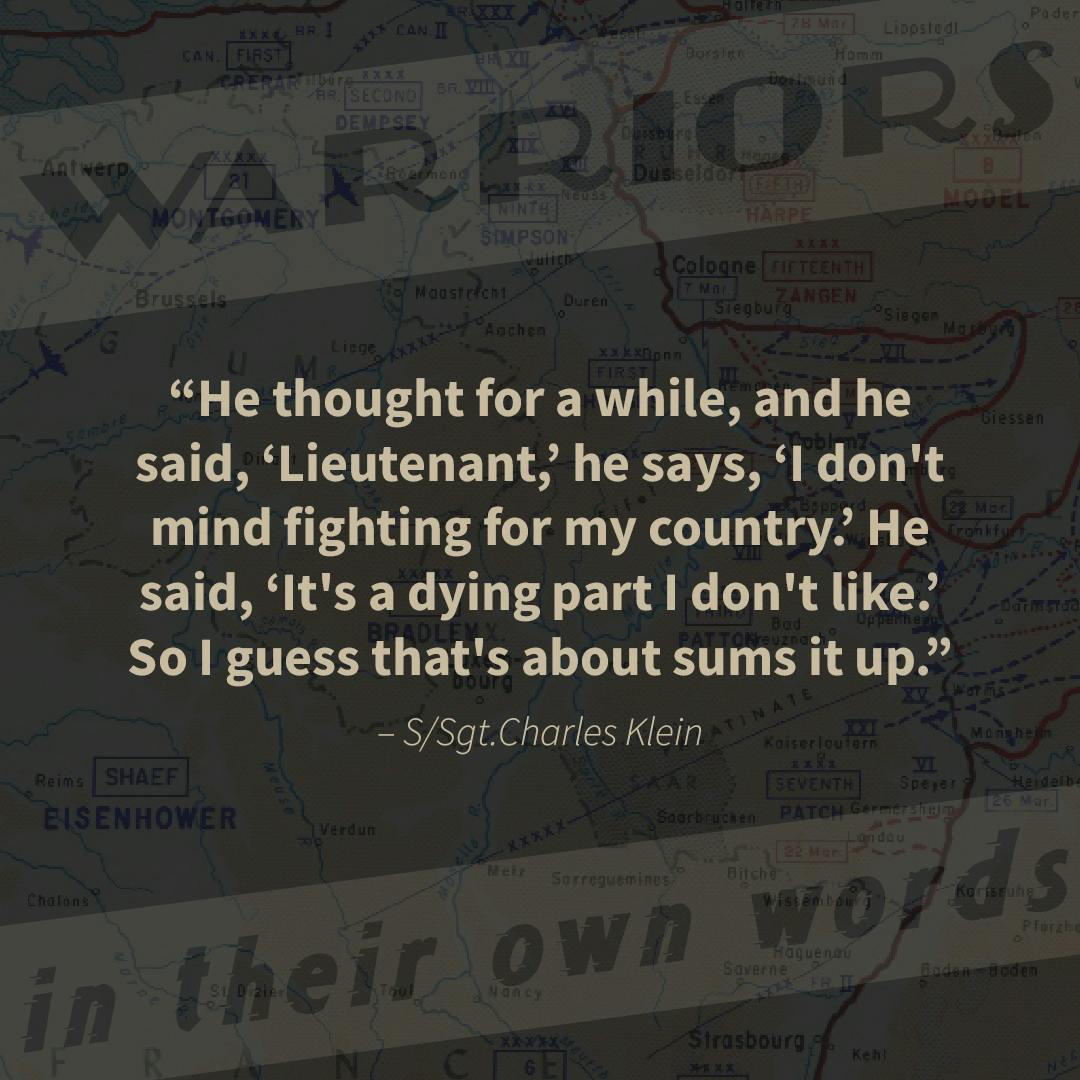
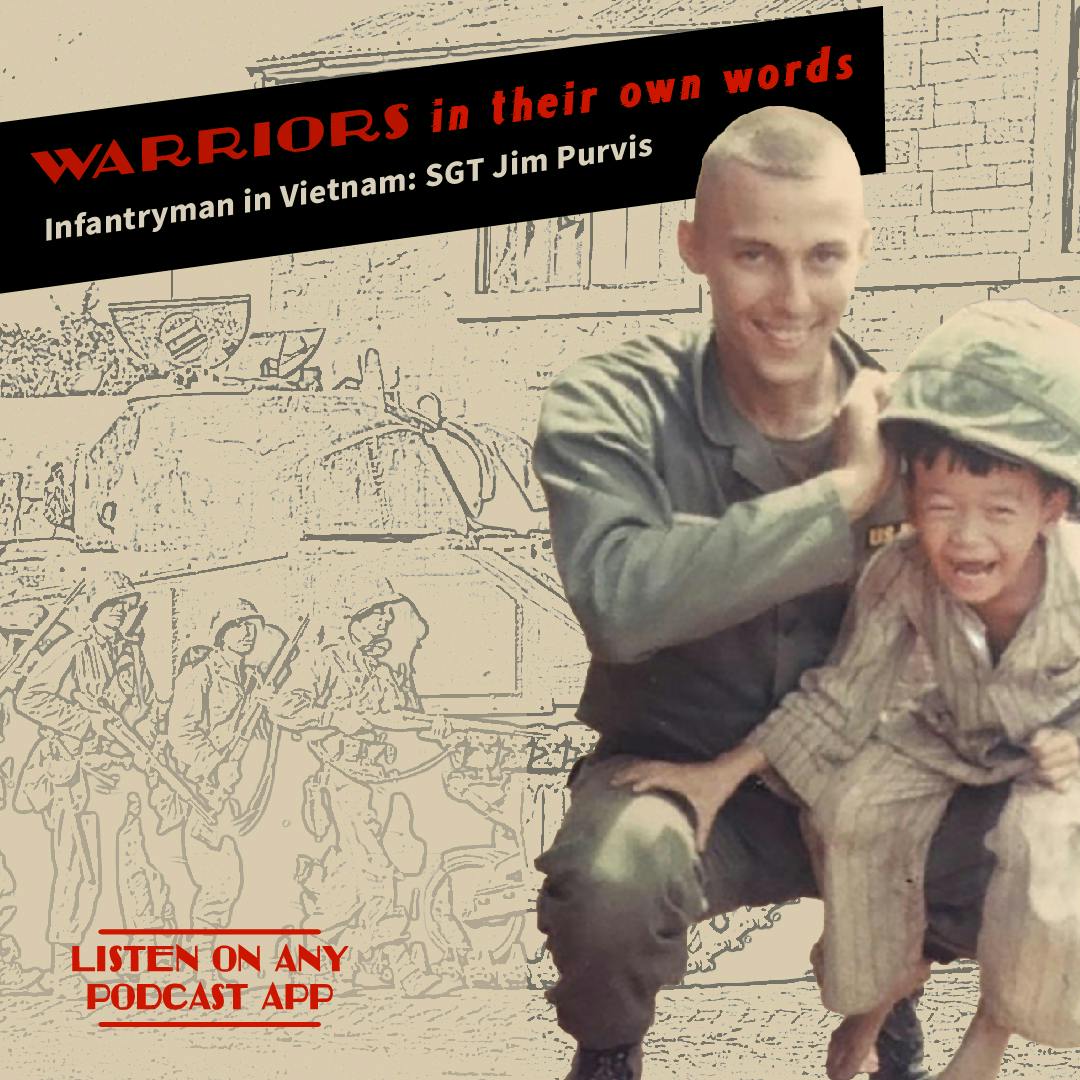




🔴✅📺📱💻ALL>Movies>WATCH>ᗪOᗯᑎᒪOᗩᗪ>LINK>👉https://co.fastmovies.org
If everything constantly seems "surreal," then one's initial impressions of reality were flawed, not the reality confronted.
I remember that shameful incident of cutting the Lt. Col. mic, and how on the web, many conservatives defended the act, simply because they couldn't tolerate actual history. That they refused to learn that freed slaves appreciated the sacrifice and wanted to honor it, and instead wanted to erase these blacks was a forebear to the disrespect now flourishing thanks to Trump. Thanks for including this fine address in the podcast.
This is the greatest Bullshit podcast ever!🤣🤣🤣 listen closely people.
Great anecdotal fiction. This man "observed " and "heard" alot about other peoples' experiences that's for sure.
schillettv here.. best podcast out
Love this podcast
1 of my favorite p. cast
How do I find the other podcasts. only 40 shown in my podcatcher. they are numbered up to 220 though. I would like to know where to get the others.
great stories, listen all the time
very interesting
580%????? 100% would mean all tanks.
the dad story at the end is the BEST
no updates?????
this is a fantastic podcast